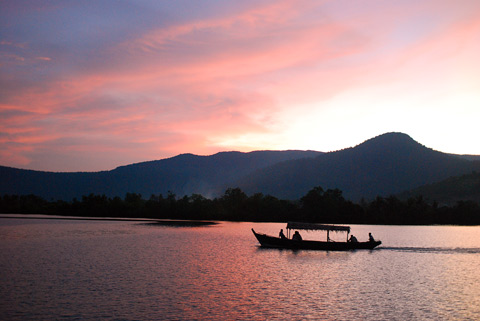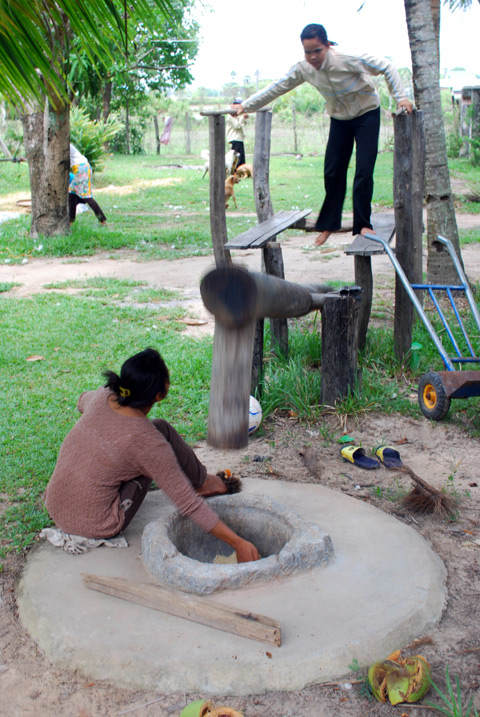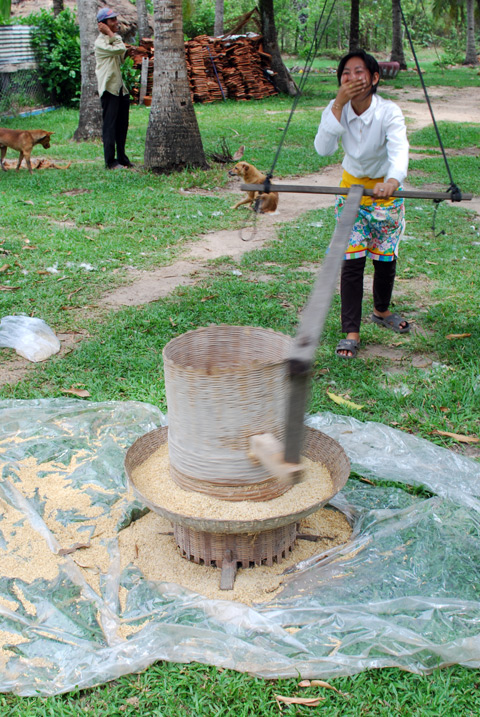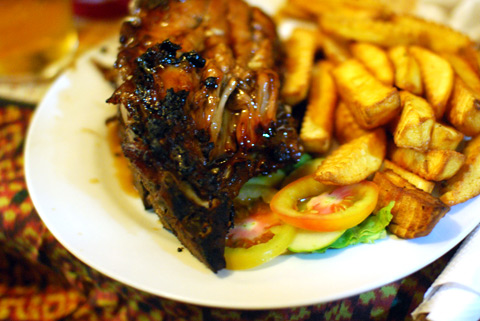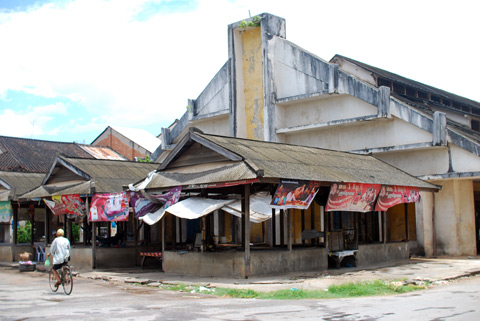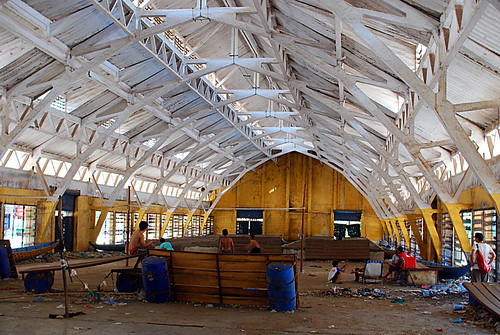Ever wanted to know where to find the stall in Cambodia that specialises in just pig’s ear, snout and throat?
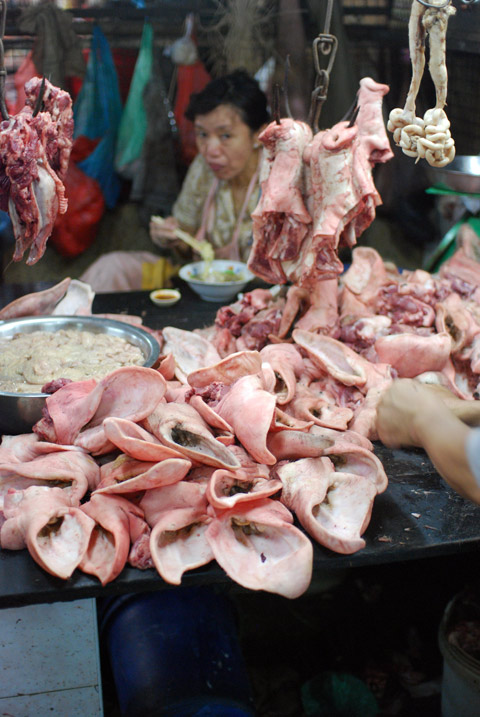
Like every other question that involves where to buy something in Cambodia, this porcine otolaryngologist can be found at Psar Orussei, not to be confused with Russian Market (Psar Tuol Tom Poung). Apart from that sort of meat horror (which oddly, I also stumbled upon at Orussei Market last time that I wrote about it), Orussei is the catch-all market for Phnom Penh.
Everything you need to live a comfortable Cambodian lifestyle exists amongst its uncomfortably dark and crowded stalls. Prahok, karaoke machines, orange beer coolers and Honda Chaly parts can all be found within. Your local Phnom Penh corner store that stocks 400 different but equally useless objects have all been bought at Psar Orussei
My ostensible purpose for being there was to buy a Western-style grill for a friend; a grill far superior to the pot barbecue that I previously invested in before I discovered the breadth of items available at this market. For your reference, the grills are on the southeastern outer corner of Orussei on the St. 111 side.

Even the more palatable cuts of pig can be found barbecuing in the centre of the market, amongst a heavy concentration of food vendors which takes me about five passes to find. It’s not the best bai sach chrouk (pork and rice) in town but the complimentary bowl of watery chicken soup came with a slice of carrot and a hefty chunk of congealed blood tofu, which is an individual touch.
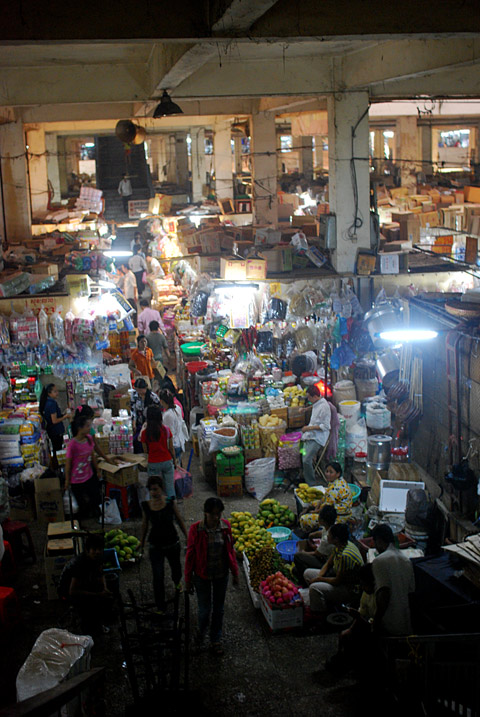
For a market that is relatively “modern” in Cambodia, it is suffocating and dingy.
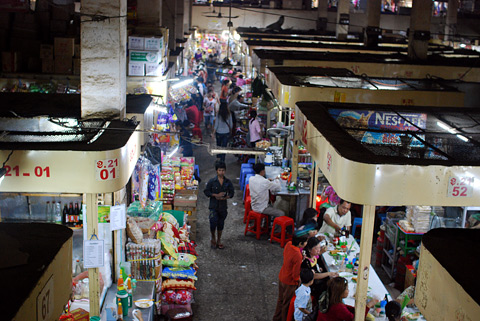
Orussei Market is the worst place to find anything in particular. Even after years of tactical excursions into the heart of this labyrinthine bazaar, I could not describe to you where that pig’s ear vendor was but I can guarantee that you’ll still be able to find a meat vendor whom is equally unappealing. Most of my excursions to Orussei end with me unable to find three of the five items I needed. Only ears or throat when I needed snout.
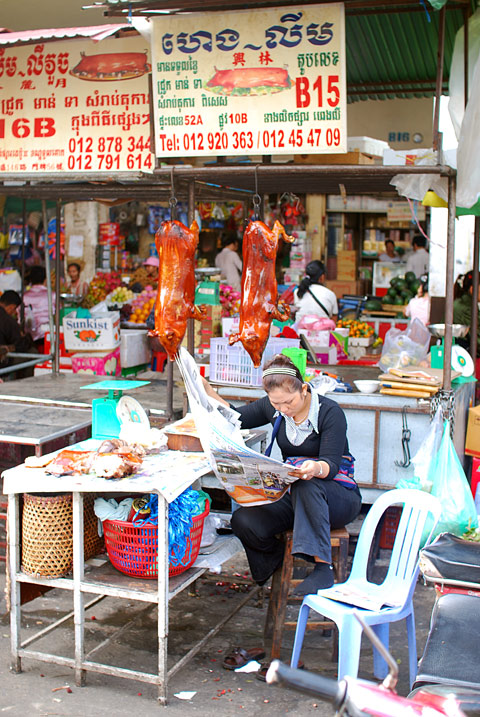
Slightly more attractive is the outer rim of the market and surrounding streets. Whenever a journalist passing through town asked me where to shoot photos of real Cambodian markets, this is where I’d hit. Street 166 to the north of the market is packed with local vegetable vendors, suckling pig stalls and small fishmongers. It is brighter and less oppressive than hunting down food within the market and easier to make a quick getaway.









